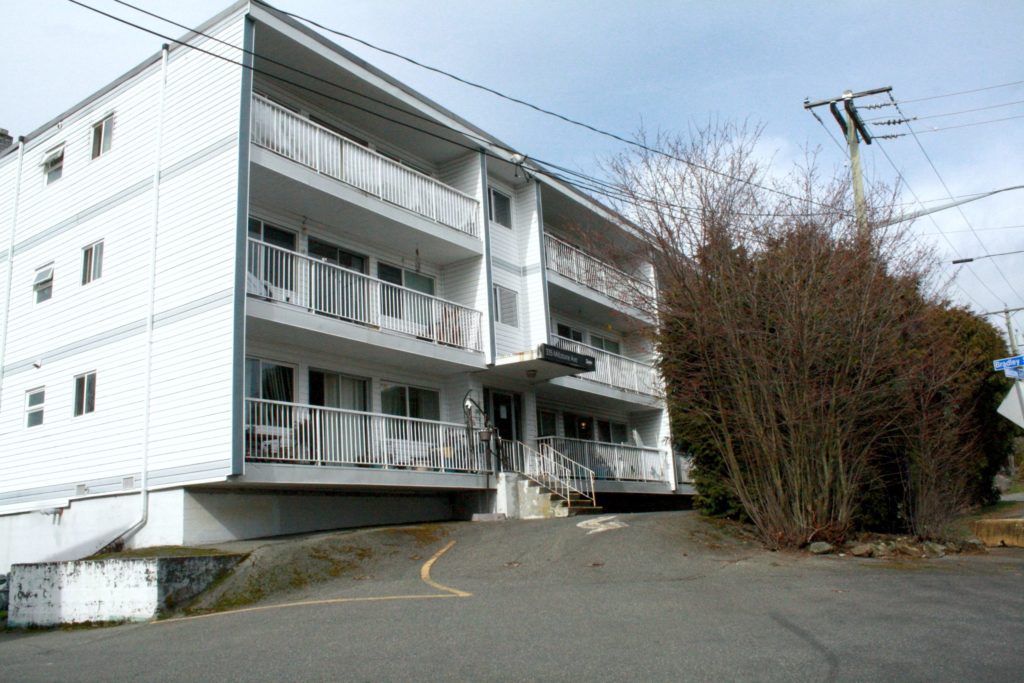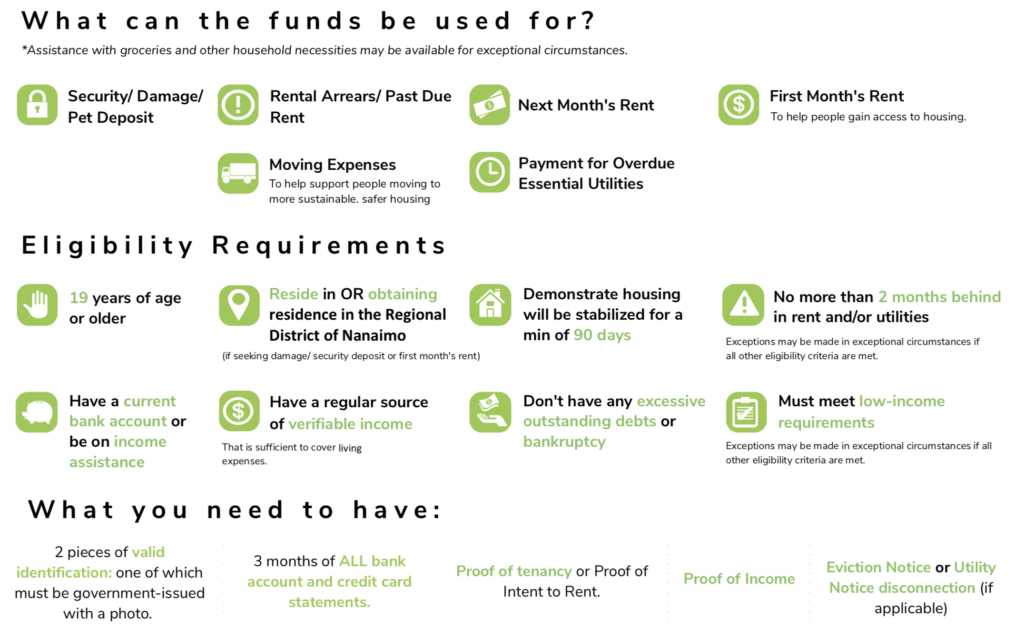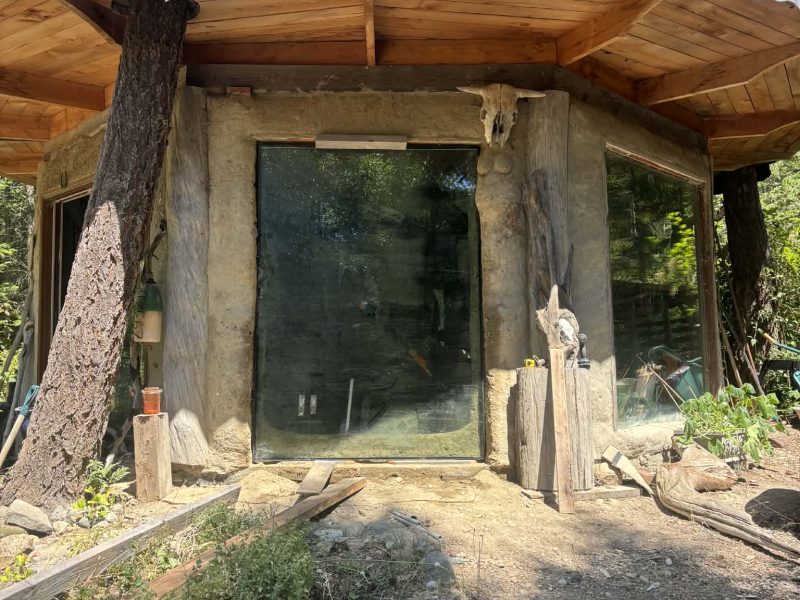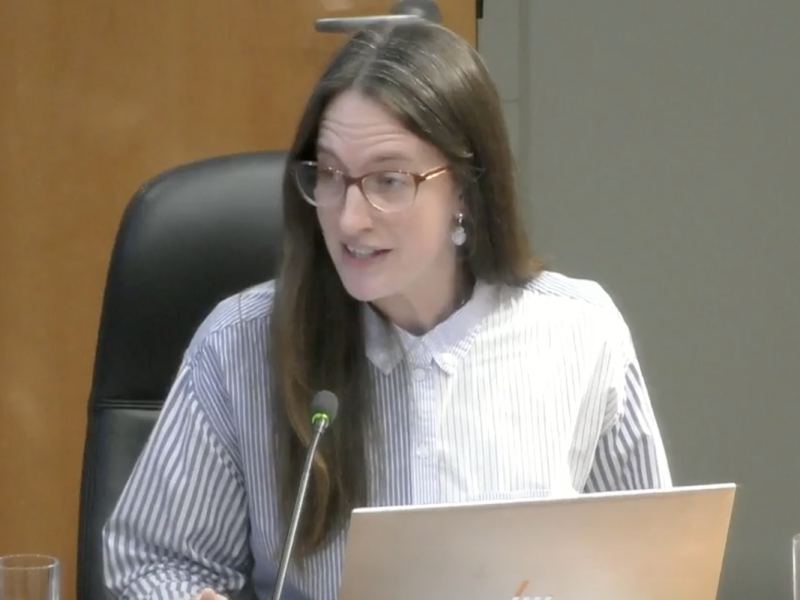
This story is part of our series on rent in Nanaimo, Making Rent. Sign up for our weekly newsletter for the latest updates on this reporting.
“I’ve had quite a few people tell me that they can finally sleep at night and I feel like that’s making up for the lack of sleep I’m getting!” says Azura Kines.
At Nanaimo’s fledgling rent bank, the sole case worker has been working hard to keep up with high demand and witnessing the positive impact firsthand since the Nanaimo Region John Howard Society started serving residents on Jan. 18, 2021.
Nanaimo’s new rent bank enables individuals to apply for zero-interest loans of up to $1,500 or $1,800 for families to help cover unpaid rent, upcoming rent they can’t afford or up to $500 to cover unpaid essential utilities.
“We had a quiet first couple weeks and then there was a news article released by Nanaimo News Now and all of a sudden we had so many coming in,” says Kines.
They’ve since received more than 120 pre-assessment applications, most submitted between Feb. 1 and March 1, including 40 in a single weekend.
“That’s quite a bit higher than we were anticipating,” explains Kines, adding that rent banks in other regions of B.C. typically see about 20 per month. “I’m not sure if that speaks to our crazy rental prices, or if that speaks to a lack of other programs that exist on the Island, but it’s obviously a huge need here.”
More than a loan
The rent bank was funded as a temporary pilot project by the City of Nanaimo with $90,603 from its housing legacy reserve fund, (money set aside by the city to help fund affordable housing initiatives), with additional funding from the Nanaimo Homeless Coalition and BC Rent Bank.
The BC Rent Bank was a direct result of the 2018 Provincial Rental Housing Task Force, which recommended the province implement a B.C.-wide rent bank system for low-income people.
”We estimate that about 86 per cent of renters now have access to the services,” says Melissa Giles, BC Rent Bank’s project manager. About 90 communities are listed on the website, though many link back to a centralized rent bank, explains Giles. For example, the Nanaimo Rent Bank also serves the communities of Lantzville, Parksville, and Qualicum Beach.
“We consider ourselves on the homlessness prevention end of the spectrum but I think rent banks are a lot more robust than just administering loans to people,” says Giles. “This can include things like financial literacy, mediation with their landlord, advocacy around tenant rights issues, or helping them navigate complex systems.”
When applications first started pouring in, Kines was able to collaborate with John Howard’s housing team and funnel 35 applicants from the first flood through a different program, helping them access rental arrears grants for people financially affected by COVID-19, which are unfortunately no longer available.
So far, at least 12 rent bank loans have been approved and more are in progress, says Kines, and they continue to point applicants who don’t qualify to other services, like additional subsidies or employment options.
“I’ve had quite a few success stories,” says Kines. “I’ve seen a lot of tears in the past couple months. A lot of people who have gone through literally every other option… it is rewarding to see the relief that comes with getting that payment and getting that cheque to their landlord.”
Related: How can we make rent in Nanaimo more affordable?
Pandemic drives demand for rent bank
Other rent banks in B.C., like the Vancouver Rent Bank, have reported a spike in demand since the start of the COVID-19 pandemic. The pandemic has exacerbated income inequality and caused serious financial stress for many Canadians due to job losses, according to a report by CIBC Economics based on Statistics Canada data.
While some temporary financial supports were put in place at the height of the pandemic, many of those sources are now drying up. More than 87,000 households in B.C. got help from the BC Temporary Rental Supplement program between April and August of 2020, but that program is over, and the B.C. government’s ban on evictions for non-payment of rent officially ended on Aug. 18, 2020. Landlords must offer tenants a rent repayment plan to cover unpaid rent from the ban period, but this doesn’t help tenants who can’t make rent now.
About six per cent of Canadian renters accumulated rent debt between October 2019 and October 2020, according to CMHC data, leading some to argue for rent forgiveness.

Making rent debt ‘less of a burden‘
The rent bank gives people experiencing a temporary financial crisis a viable option to turn to when all other avenues currently available, like taking out a loan from the bank or borrowing money from family or friends, are closed, explains Kines. It can also save people from resorting to payday loans, which can mislead consumers into paying exorbitantly high interest rates.
“There’s no interest fees and we give them such a long period of time for repayment that it’s not supposed to be detrimental,” says Kines. People have up to 24 months to repay their loan, and if somebody needs to defer, they don’t add extra charges.
“It’s not supposed to be a burden,” says Kines. Rather, it’s meant to prevent someone from getting evicted because they can’t pay rent, only to face skyrocketing rental prices elsewhere and wind up homeless. “I think that people would find that paying that little bit monthly back wouldn’t affect them nearly as negatively as getting deeper into that cycle.”
Related: Nanaimo’s renters data, explained.
Loan applications are reviewed by the loan committee, which decides to approve or deny applications according to its criteria. The main consideration is whether repayment within the 24 month repayment period is feasible for the applicant. An unemployed person could qualify if they have some kind of income (such as employment insurance or income assistance), or if they can show proof of upcoming employment.
It also requires that applicants are no more than two months behind in rent, though exceptions can be made in certain circumstances.

People in need of rent bank for all kinds of reasons
While many applicants have been affected by COVID-19 job losses, Kines says other common factors include medical emergencies, delayed income assistance payments, mental health issues and unexpected living costs.
“I’ve definitely seen a highlight on the need for more mental health resources,” says Kines. “And lots of single parents…Sometimes saving them that one month of rent can completely help them get back on their feet and prevent them and their kids, sometimes young children, from being homeless.”
B.C.’s 2019 Child Poverty Report Card shows 22 per cent of children in Nanaimo living in poverty—higher than the B.C. average—with 53 per cent of children in lone-parent households living below the poverty line.
The same report card shows 16 per cent of all Nanaimo residents living in poverty. With the spike in rental costs, even more people are being pushed to the financial brink.
“Some people have had their rent increased in the past couple years and it has become unaffordable,” notes Kines. For those who have to move, “There’s not much in the range of affordability, especially because we have so many people in Nanaimo who are accessing some kind of social assistance.”
More subsidized and affordable rental housing needed
At current income assistance rates, it’s near impossible to stay housed without some form of subsidy. “Sometimes I have people who are accessing the rent bank because they’ve been on a waitlist for like three years to get into affordable housing,” says Kines. “There are options [like] Nanaimo Affordable Housing Society…but getting in there takes a long time because there’s so many people who need it.”
Kines says it will take a multi-faceted approach to solve the housing crisis long-term.
“We’re trying to fill a gap by having the rent bank as an option. But there are still so many gaps in our community,” Kines says. “We’ve got so many more people moving onto the Island but there’s also a lot of people being forced to leave the Island because they can’t afford to live here…There’s a lot of people living in their cars. I also work with supportive housing and even that has such a long wait list.”
There are a number of new affordable and supportive housing projects planned for the Nanaimo region, but demand continues to outstrip supply.
Related: Low-income seniors struggle to find affordable housing.
“Really it takes a wide approach between many different partners to rectify the housing crisis that we’re experiencing,” says Nanaimo Region John Howard Society’s housing manager Andrew Ferguson.
Ferguson says he too has witnessed the rental affordability crisis worsen dramatically since he first started with the organization as an outreach worker in 2015. He says it’s clear more people need help making ends meet, not just people who are currently homeless, which is the population John Howard Society has historically focused on assisting.
“The demographic of need is now so broad across the board, particularly seniors on fixed incomes and persons with disabilities who have a fixed monthly amount (which was recently changed)…where a new rental might be 80 per cent of a person’s income in a given month. It’s just not sustainable.”
“Having a wide variety of ways in which we can help people find and maintain their housing is incredibly important in terms of those individuals and those families getting the support they need to live.” [end]
This original reporting is made possible by the monthly members who support this work.



